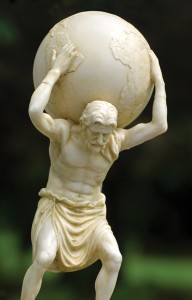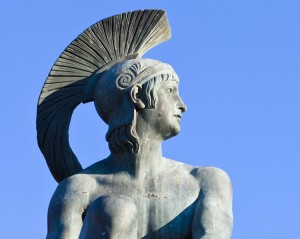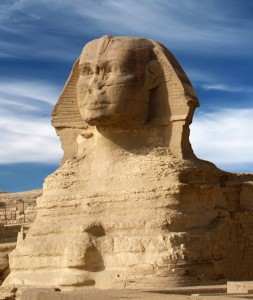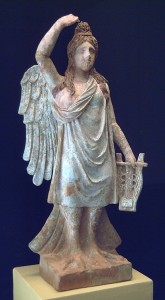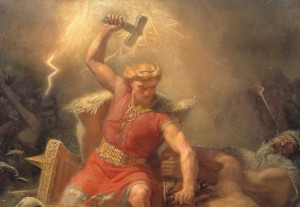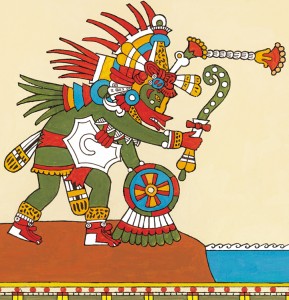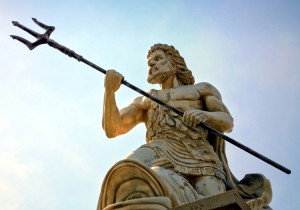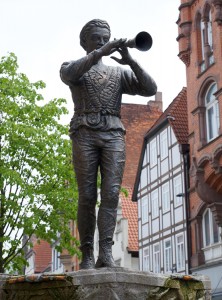Mythic Monday: A Christmas Zeus
Monday, December 25th, 2017December 25, 2017
In ancient Greek mythology, there were many powerful gods and goddesses, but none was mightier than Zeus, the king of the gods. From his throne on Mount Olympus, Zeus ruled over Earth and sky. Ancient Greeks believed that this supreme god was all knowing and all seeing. They viewed him as a protective father figure. People (and other gods) were careful not to anger Zeus. His rages could produce frightening thunderstorms, and he slayed his enemies with thunderbolts. In art, Zeus is often depicted as a bearded and majestic man holding a thunderbolt.
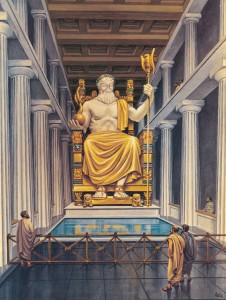
The statue of Zeus at Olympia, Greece, was probably the most famous statue made by the ancient Greeks. Credit: WORLD BOOK illustration by Birney Lettick
Zeus was the son of Cronus and Rhea, members of an earlier race of ruling gods called the Titans. Zeus and his siblings defeated the Titans. Zeus then took Cronus’s place on Mount Olympus. There, he headed a family of 12 major gods and goddesses called the Olympians. Zeus’s brothers were the gods Hades and Poseidon. The goddesses Demeter, Hera, and Hestia were Zeus’s sisters.
Zeus first married Metis, a goddess of intelligence. Zeus was told in a prophecy that Metis would give birth to a daughter as strong as her father and as wise as her mother. The prophecy also warned that if Metis gave birth to a second child, it would be a son who would rule over all gods and humans. Zeus feared being overthrown by Metis’s second child. When Metis became pregnant with their first child, Zeus swallowed Metis whole to escape the prophecy. He soon suffered a terrible headache, and he asked the blacksmith god Hephaestus to split his head open with an ax to ease the pain. Hephaestus obeyed the powerful god’s order. The moment Zeus’ skull cracked open, Athena, the goddess of wisdom and warfare, sprang out of his head fully grown and wearing a suit of armor. Athena became Zeus’s favorite child.
Zeus’ second wife was Hera, the goddess of marriage and childbirth. Ares, a powerful god of war, was born of this union. However, it was a stormy marriage full of jealousy and trickery. Zeus had many secret love affairs. In return, Hera harshly punished him. She killed his mistresses or transformed them into beasts. Sometimes, Zeus would transform his lovers into sacred animals to hide them from his wife’s wrath. In one story, Zeus was courting a band of nymphs. A nymph named Echo saw Hera angrily approaching. Echo distracted Hera with charming chatter while Zeus and the other nymphs made their escape. When Hera realized Echo’s trick, she was enraged. She cursed Echo never to be able to speak again, except to repeat the words of others.
Despite Hera’s jealous rages, Zeus fathered many children with other goddesses and mortal women. His children included the goddess Aphrodite; the gods Apollo, Dionysus, and Hermes; and the mortal heroes Perseus and Heracles (Hercules in Latin).

